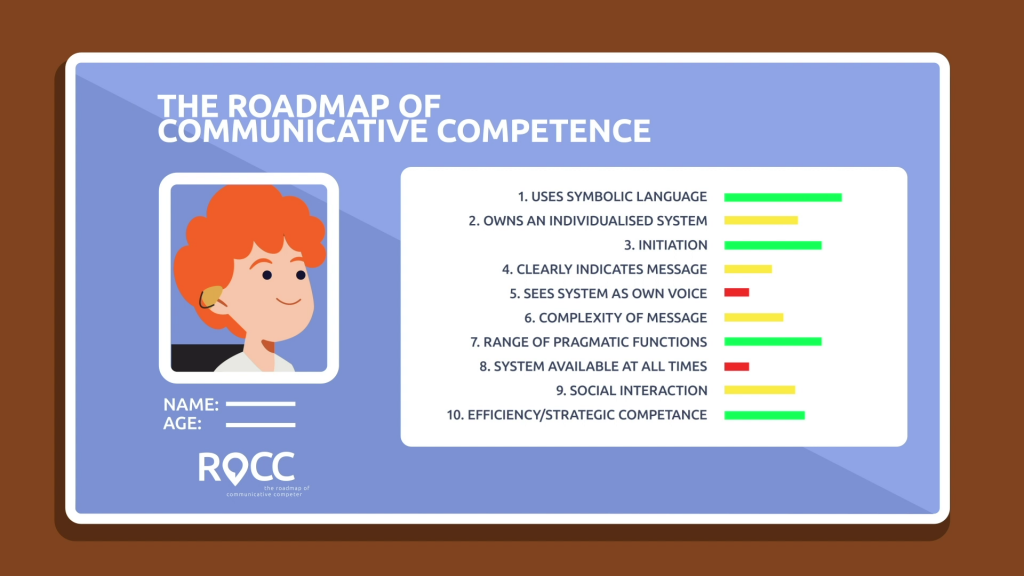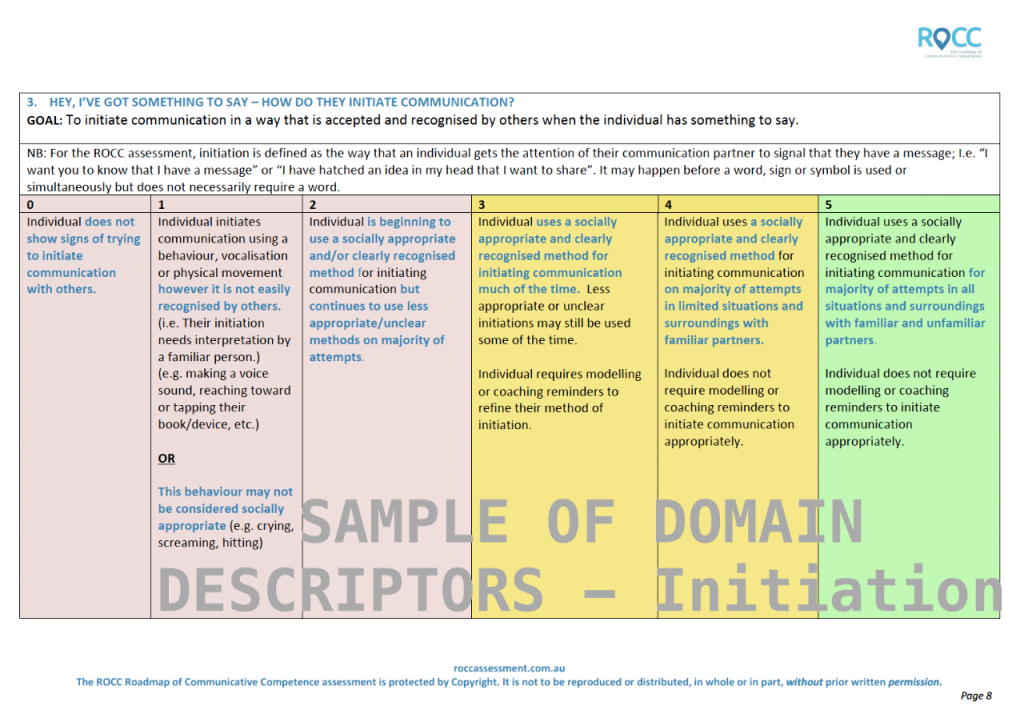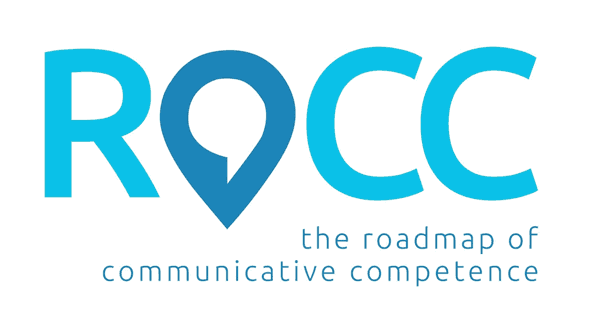The ROCC is a tool to identify, plan and implement communication change within your setting – and it helps you to track an individual’s progress over time as they work towards communicative competence. Progress is measured against 10 key domains of communication:

- Use of symbolic and specific language
- Ownership of an individualised and comprehensive communication system (including adjunct systems if required for those who are verbal)
- Appropriate and recognisable initiation of messages
- Intelligibility of messages (access or articulation)
- If using AAC, do they see the system as their voice?
- Complexity of messages – expressive language level
- Range of pragmatic functions
- Taking responsibility for availability of their system
- Social interaction
- Strategic competence – conversation repair, efficiency, etc.
When you complete a ROCC assessment, you are stepped through these 10 domains where there are detailed scoring descriptors for each domain. The descriptors cover levels 0 through to 5. This then gives you a visual profile of communication development for your client, student or person. It can be used for all ages and all diagnoses and is relevant for all forms of communication – speech, sign and aided AAC (augmentative and alternative communication).

What is the purpose of the ROCC domains?
The key purpose of the ROCC domains is to consider which area is currently having the greatest impact on the participant’s development of communicative competence. In other words, if you focus your efforts for a short term goal, what will have the biggest impact on improving their communication?
How did these domain descriptors arise?
These 10 domain descriptors arose through a combination of clinical experience, observation of key milestones in each domain, and the research evidence base around autonomous and competent communication. This was then cross-checked against key teachings and frameworks in the area of working with people with communication challenges and augmentative and alternative forms of communication.
The descriptors were then refined and reviewed over our 18 month trial of the ROCC in 8 Australian schools, to ensure that a range of communication modes and levels were included.
Can I access training in how to assess against these domains?
Definitely! ROCC Basic Training is available online and provides you with an introduction to the ROCC and detailed learning around all levels within the 10 scoring domains. Many find this training helps them to better understand their students or clients with communication challenges. Visit the training page of our website to find out more.
Should I consider the ROCC results together with other assessment tools?
The answer is yes! It is important to note that the ROCC is not intended to be a stand alone assessment tool – it is intended to provide a bigger picture process to see change over time. Review and discussion of a participant’s ROCC profile may suggest the need for a more detailed assessment within a specific domain that will better inform ongoing support or intervention.
We also recognise that there are many other considerations when working with individuals who have communication challenges. As you complete the ROCC assessment, you’ll be prompted to consider other contributing factors (e.g. social networks, sensory challenges, peer interaction, literacy) and whether you feel they are currently having a significant impact on the participant’s communicative competence.
Contact us to find out more!
If you would like more information about the ROCC and how it could be used in your setting, or more specific help with the 10 domains, please visit our website to find out more and get in touch!
